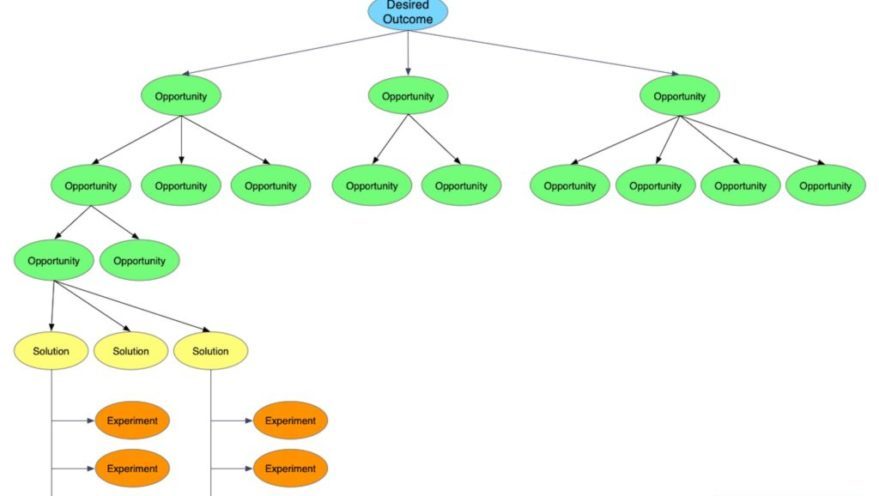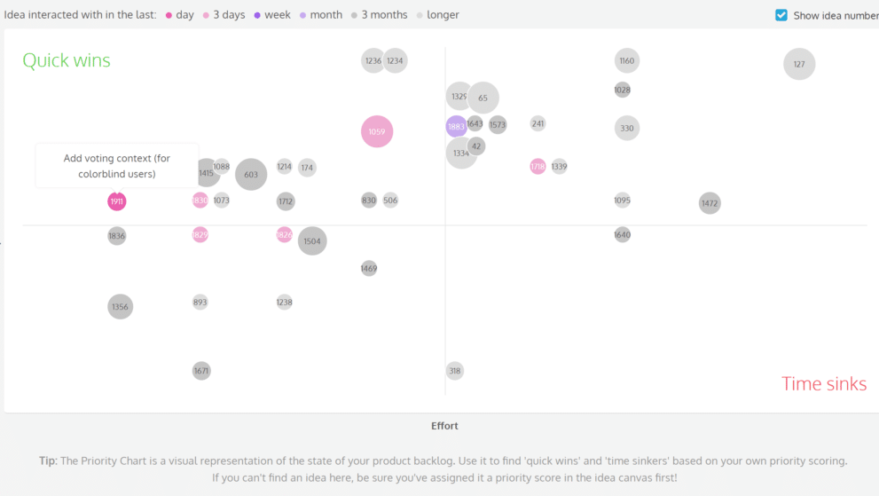Product prioritization can come in the shape of many different models and frameworks. Some go back decades, from all schools of thought and different branches of the business world.
For the most part, the models share the same purpose of prioritizing all the things you could do. The point is to identify which ones you actually want to do and in what order.
Each framework has its pros and cons. The models covered in this article are:
Why prioritization models are important (and why not)
To be honest, I’m wary of product prioritization models. I’ve still never found a framework that actually solves the problem completely, that tells you exactly the right thing to build. That’s because a PM’s decision is based on a wider set of inputs that can’t be captured by a model alone.
Over the years I’ve observed really talented PMs grow too dependent on their prioritizing models, which usually results in one of these situations:
- They’re building the wrong thing because the model isn’t perfect.
- They end up tweaking and switching the model to come up with the answer they already intuitively know is right. They just want the model to back them up!
So, while choosing a prioritization framework for your team and your product is important, just take the model with a grain of salt. It’s not just what you choose, but how you use it.
The most common product prioritization models
1. RICE score
What is the RICE scoring model?
The RICE scoring model is a popular prioritization framework, and for good reason. It gauges four different elements of a single product idea – Reach, Impact, Confidence, and Effort – and offers an estimate of that idea’s viability and value to the business.
Personally, I switch around the letters to evaluate in this order:
- Impact: What would the impact be for individual users? To what extent will this solve their problem or improve their life?
- Reach: How much of our customer base will this affect?
- Effort: Which resources are necessary to make this happen, and how much?
- Confidence: How sure are we about our answers to the 3 elements above?
The great thing about RICE is that it measures the impact and reach of what you’re considering.
How does the RICE scoring model work?
Each element receives an individual score, and they’re all calculated in a formula to give the idea’s overall RICE score. The highest scores take the highest priority.
(Reach x Impact x Confidence) / Effort = RICE Score
There are a few ways you might want to apply some subjectivity to the RICE score.
For example, an idea that’s high impact but low reach might not seem worth it. But what if those customers that are reached by the idea/solution are big revenue drivers for the business? This might make the effort worthwhile.
Another idea could seem perfect – high impact, high reach, low effort – but it has a low confidence score. This means the idea has potential, but requires more scoping and research to confirm some hunches.
ProdPad allows you to score and visualize ideas on your product roadmap in line with the RICE model.
2. Opportunity Solution Tree
What is the Opportunity Solution Tree?
Sometimes called the Product Tree, the Opportunity Solution Tree (OST) is an excellent product prioritization model created by Teresa Torres. It’s a sort of mindmap to look at both opportunities and problems, and then brainstorm multiple potential solutions.
In Torres’ own words, the OST “visualizes what you are learning in discovery and the decisions you are making along the way.”
How does the Opportunity Solution Tree work?
First you should define a desired outcome. This could be the metric that’s driving the most value for your business right now, or it could be another company objective.
Then you brainstorm opportunities that could help you reach that desired outcome, or problems that might stand in the way.
Finally you generate ideas for how to solve those problems or realize those opportunities. These can be brand new ideas, of course, but you can also map every existing idea in your backlog. If an idea can’t be connected to an opportunity or problem, then it’s not prioritized.

We love this model at ProdPad, and in fact, our tool allows you to chart your roadmap with the Opportunity Solution Tree.
3. The Kano Model for prioritization
What is the Kano Model for prioritization?
The Kano Model for prioritization is a framework that measures how customers perceive the value of your features and potential features. The idea is that you can rank features based on how much they’ll satisfy your users. This model was developed by Noriaki Kano, a professor of quality management at the Tokyo University of Science.
How does the Kano Model work?
Essentially your team will weigh the customer satisfaction against how much effort and development resources it would take.
Depending on the proportion of satisfaction vs. effort, your features are placed in 3 categories:
- Basic: These features could be resource intensive, but you need them to stay competitive. People won’t even notice it’s there – they’ll only notice if it’s NOT there.
- Performance: These features require some investment but also pay off with a proportionate amount of customer satisfaction.
- Delighter: These features delight and excite your customers, beyond the amount of effort needed to build them. These don’t just create a positive sentiment about your product, they can boost the perceived value of it too – even if they’re tiny, little things.
There are also 2 other categories that take features off the roadmap or out of the backlog entirely: Indifferent and Dissatisfaction.
4. MoSCoW Prioritization
What is MoSCoW prioritization?
The MoSCoW prioritization framework has been around forever and is still popular enough. But let me be honest – it’s not good for any product. This model is made for project management, not product management.
How does MoSCoW prioritization work?
The MoSCoW method requires you and your team to classify all your ideas into 4 buckets:
- Must have: Mission-critical solutions and features
- Should have: New solutions and features with a high value-add
- Could have: Ideas that are interesting but not important (or relevant) at the moment
- Won’t have: Ideas that definitely will not be included in the sprint or product backlog
It’s my view that for product management, the four categories don’t have a ton of meaning. You place ideas in the four categories, but within each category, there’s no framework for further prioritizing. It’s still just a list of ideas.
Plus, as a PM, you can’t definitively say something is a “won’t have,” because your product, user base, and market will evolve. So everything ends up in “could have,” but there’s no language to differentiate what’s in that box!
How to use a product prioritization model
You can use the right model and still prioritize in the wrong way.
Okay maybe “wrong” is a strong word, but I believe that the common practice of prioritizing features is way less strategic – and therefore less effective.
I recommend working at the problem level, not the solution level. Examples of problems could be lagging conversion rate, low user growth, or high churn.
Prioritizing at the solution level sounds like this: “Of all the features we’ve thought of so far, here’s the best one to go with.”
Prioritizing at the problem level sounds like this: “Of all the challenges and opportunities facing the business/our customers right now, here’s the top one to tackle. Now let’s brainstorm a set of solutions and figure out the best fit.”
See how the first one is limited, and the second is expansive?
If you’re only prioritizing within a defined set of potential features, that’s poor product management. Taking a step back to evaluate the problem and imagine other solutions gives you more peripheral vision. You’ll come up with a wider set of possibilities, and your product roadmap will stay more dynamic. It allows for continuous discovery.
Bottom line: Don’t assume the next best thing to build is already in your backlog!
Which prioritization model is best for my product?
The best model for your product is probably some combination. No framework is the perfect answer; you’ll likely have to mix and match. And that’s a good thing!
Just like a great product manager shouldn’t fall in love with a single feature idea, you shouldn’t fall in love with a single prioritizing scoring system.
No matter what, the most valuable tool you have is your own judgment and your team. And at the end of the day, PMs have to make the final decisions. Models can augment your decision making process, but they can never do it for you.
The post Which Prioritization Model is Best for my Product? appeared first on ProdPad | Product Management Software.

